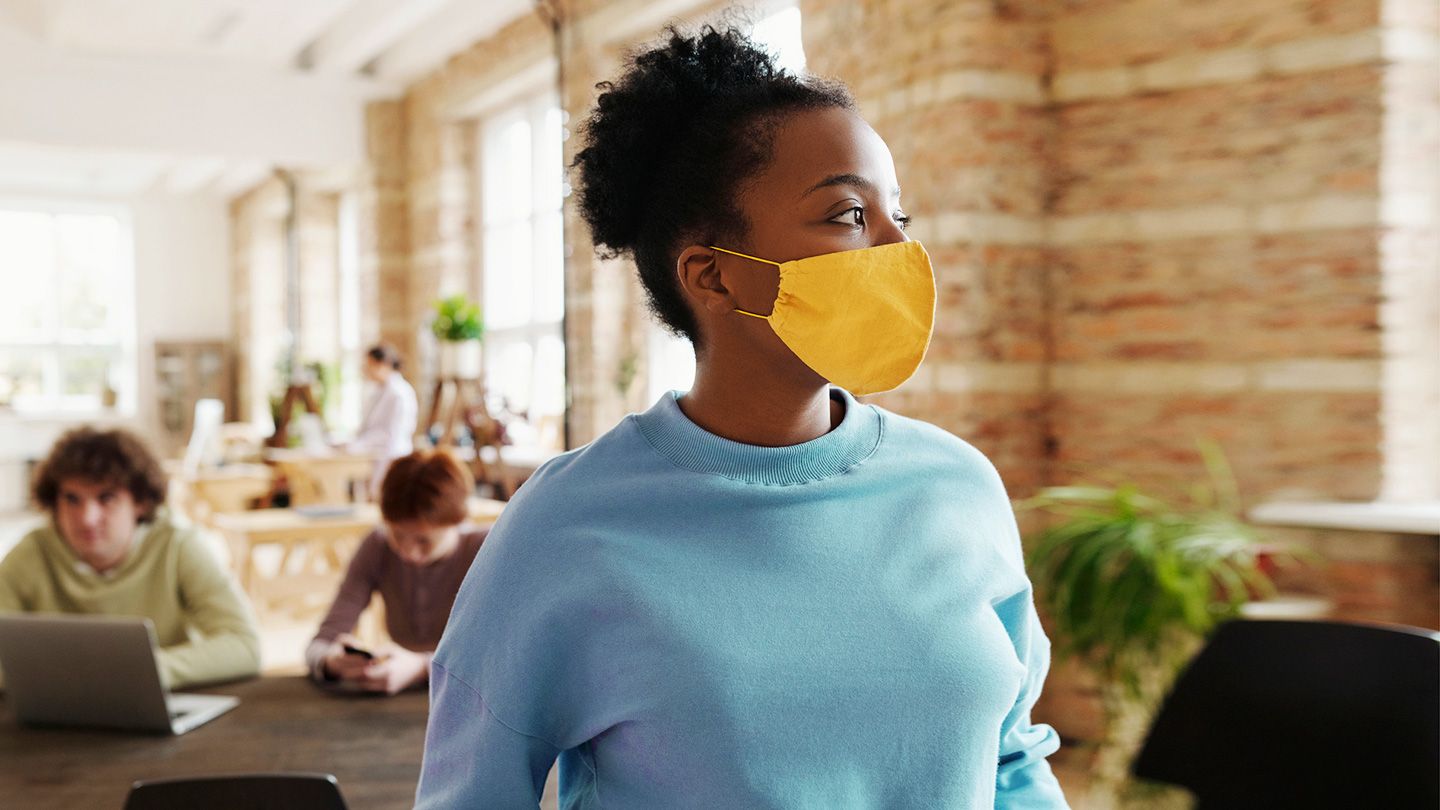Infection
Masks Are Coming Back as COVID-19 Numbers Rise
For the sixth week in a row, hospitalizations due to COVID-19 have crept upwards. The latest tracking from the Centers for Disease Control and Prevention (CDC) shows that hospital admissions have climbed by nearly 19 percent during the week ending August 19.
At the beginning of June, the weekly share of COVID-19 tests coming back positive was at about 4 percent. Now, that figure has more than tripled, to 13.4 percent. In the region made up of Texas, Oklahoma, Louisiana, Arkansas, and New Mexico, the most recent positivity rate hit 18 percent, per the CDC.
“With COVID-19 infections on the rise — concurrent with increased risk for infection with other cold weather respiratory viruses like influenza and RSV — many people may want to consider wearing a high-quality mask in crowded indoor spaces,” says Jennifer Horney, PhD, director of the epidemiology program at the University of Delaware in Newark.
She adds that masking may be especially helpful now because updated vaccines — which should better protect against newer, more transmissible subvariants of omicron such as EG.5 — won’t be available until after the CDC’s Advisory Committee on Immunization Practices meets on September 12, per the Federal Register.
Research has demonstrated that vaccinated individuals can still spread COVID-19, but those with up-to-date vaccines will be better protected against severe illness.
COVID-19 Mask Mandates Reappear
While overall COVID-19 indicators are much lower from a year ago, some institutions are taking no chances and bringing back mask mandates.
Morris Brown College in Atlanta posted on Instagram that it was restarting its COVID-19 mask policy for two weeks starting August 20 due to reports of positive cases among students.
Becker Hospital Review found at least eight hospitals that have reintroduced face covering rules. Kaiser Permanente’s Santa Rosa Hospital in California, for example, now states on its website that “masks are required upon entrance to the hospital and throughout your visit.”
Other institutions that have reinstated masking include Upstate Medical University in Syracuse and Auburn Community Hospital in Auburn, New York. UMass Memorial is requiring employees to wear masks when visiting emergency department and cancer patients.
Taking More Precautions in Specific Circumstances
For Laleh Gharahbaghian, MD, a clinical professor and emergency medicine doctor at Stanford Health Care, the return of these precautions is to be expected, especially in situations when people are in close proximity to each other and close to those vulnerable to significant infection, such as the elderly, people with heart or lung conditions, and those with immunosuppression and the immunocompromised.
She warns that individuals living in areas with high transmission rates may also want to consider wearing face coverings again.
“Some vulnerable patient populations need to be careful no matter the community transmission, as their medical conditions warrant a high degree of caution,” says Dr. Gharahbaghian. “The general public should pay attention to the transmission and positivity rates in their community and surrounding communities to make the right decision for themselves.”
In counties with high levels of hospital admission, mostly around the southern United States, health authorities recommend wearing a high quality mask and avoiding large indoor gatherings. Crowded indoor spaces that pose more of a COVID-19 risk include public transportation, stores, offices, and entertainment venues.
The CDC provides a handy tool to quickly check COVID-19 transmission levels in your county and recommend what precautions you should be taking. In Mitchell County, Texas, for example, the COVID-19 hospital admission level is “high,” and people there are urged to wear a high-quality mask or respirator.
When COVID-19 levels are high, it suggests that the virus is spreading at a fast pace and could get out of control if action isn’t taken.
Even though hospitalizations have been on the upswing, Belsie González, MPH, a spokesperson for the CDC says that they are still at such low levels that masking is not among its official recommendations for most Americans.
“Anyone may choose to wear a mask at any time, but the CDC’s advice for individual and community actions around COVID-19 are tied to hospital admission levels, which are currently low for more than 97 percent of the country,” says González.
Choosing a Mask and Wearing It Right
As compared with when the pandemic began, high-quality face coverings are more readily available. Loosely woven cloth products provide the least protection, while layered finely woven products offer more protection. Well-fitting disposable surgical masks and KN95s offer even more protection, and well-fitting NIOSH-approved respirators (including N95s) offer the highest level of protection, according to materials updated by the CDC in the spring of this year.
Even the best masks, however, provide little protection if worn incorrectly. “The best mask is a well-fitting one that you wear consistently,” says Dr. Horney.
How much protection we will need in the weeks and months ahead may largely depend on the severity and strength of currently circulating virus strains. At this stage, that remains unknown.
“We don’t really know much about what to expect during the coming winter, but we do know that we will need to rely on each individual to take the actions that make most sense to protect themselves and their communities,” says Horney.

